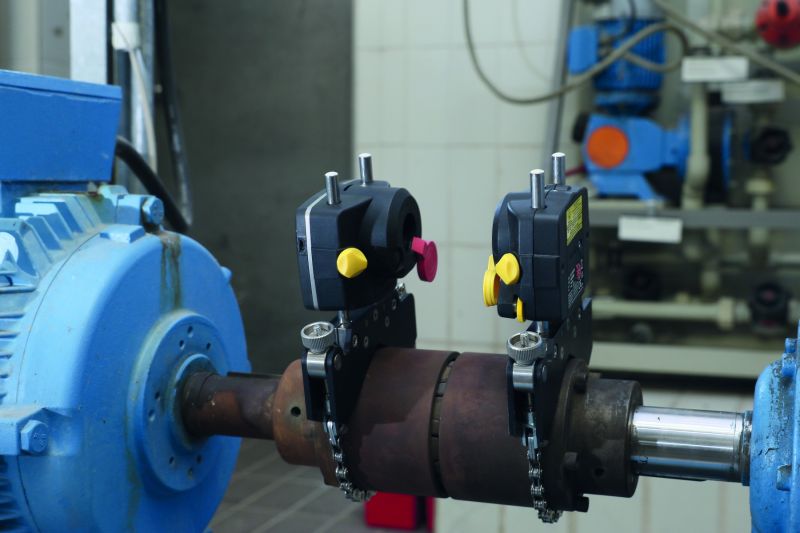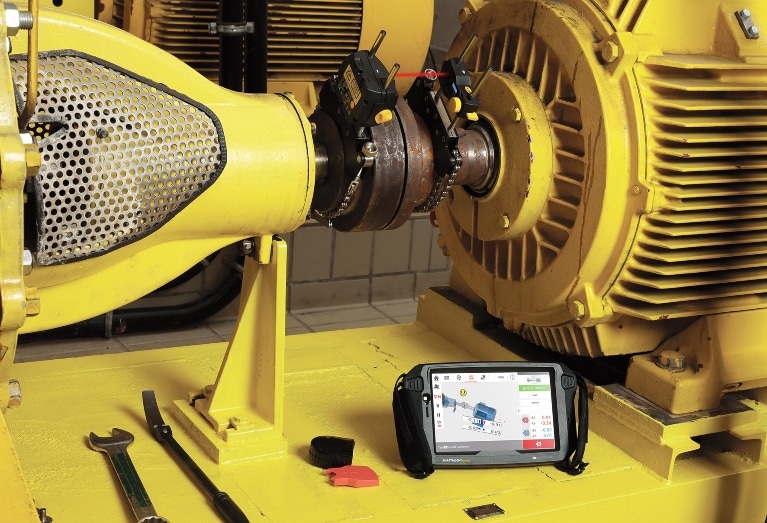
Measuring for precise alignment when installing a coupling driven asset is a smart and cost-effective way to help assure a longer machine life — right from the beginning of its active use.
Maintenance teams that measure alignment during initial machinery installation often see benefits in machine performance, efficiency, and health.
Using PRUFTECHNIK Adaptive Alignment systems can be especially valuable during machine installation because the results are highly accurate, getting measurements can be quick, and moving the machine may not be necessary.
Here are three alignment problems that can be minimized or resolved by measuring the alignment during installation phase.
1. Soft foot
Soft foot is a commonly used industry term describing distortion of the machine frame and “feet.” It occurs when a rotating machine set on its base, frame, or soleplate is off-kilter because one or more of its “feet” fails to make contact with all of the “foot-plates” on the frame.
It is the root cause of most alignment issues and a critical aspect to check before performing an alignment. Eliminating soft foot saves substantial time and money, especially since an estimated two-thirds of all rotating machinery have soft foot conditions. Addressing it right from the beginning typically makes subsequent alignments much easier.
Additionally, if the soft foot correction is successful, the bearing and motor typically have longer lives because the frame is no longer under tension and because there’s a better vibration signature when the soft foot is eliminated. Correcting soft foot improves seal and bearing life and reduces vibration—all of which contribute to a healthier machine.
Diagnosing and correcting soft foot when installing a machine enables maintenance teams to protect against further occurrences. The soft foot diagnostics tool in Adaptive Alignment systems provide a simple, convenient way to confirm the presence of soft foot and dirive and inform the user which type of soft foot and corrective action required to remove the soft foot.
2. Bolt-bound or base-bound
During initial machine installation, it’s essential to align the motor so there is some clearance in the bolt holes.
The most logical method for preventing a bolt-bound or base-bound condition is to install the stationary and movable machines properly before any piping, ductwork, or other attachments are added.
The absolute best time to use a laser shaft alignment tool to avoid this condition is during the initial installation.
3. Pipe strain
Pipe strain is likewise best addressed when machinery is first put in place. Pipe strain occurs when piping puts stress on the machine due to poor alignment of the pipes before they are bolted up.
The amount of this stress can be measured using the Live Trend feature of Adaptive Alignment laser tools. Measurements can also be performed by watching the pump during live-move or alternatively by taking an alignment measurement but instead of then moving the machine, unbolt the pipes, and taking another set of measurements and then compare the differences between the two sets measurement results.
The objective is to determine how much influence the pipes attached to the pump have on the alignment. It’s much more effective to address pipe strain when machines are being installed because teams can easily locate and correct pipes that are poorly aligned.
Using reports as a baseline for future inspections
Adaptive Alignment systems provide documented PDF reports about the condition of alignment and the presence of soft foot or pipe strain. Optional PC software is available for storing this information, making it easy to keep a running trend of machinery condition. This type of reporting tool is invaluable, especially in new installations, because it provides baseline data to reference when performing subsequent alignments.
Get more information about Adaptive Alignment at the PRUFTECHNIK.com website. Also, learn more about the Adaptive Alignment concept and feature set in PRUFTECHNIK systems by downloading the white paper on this webpage.

